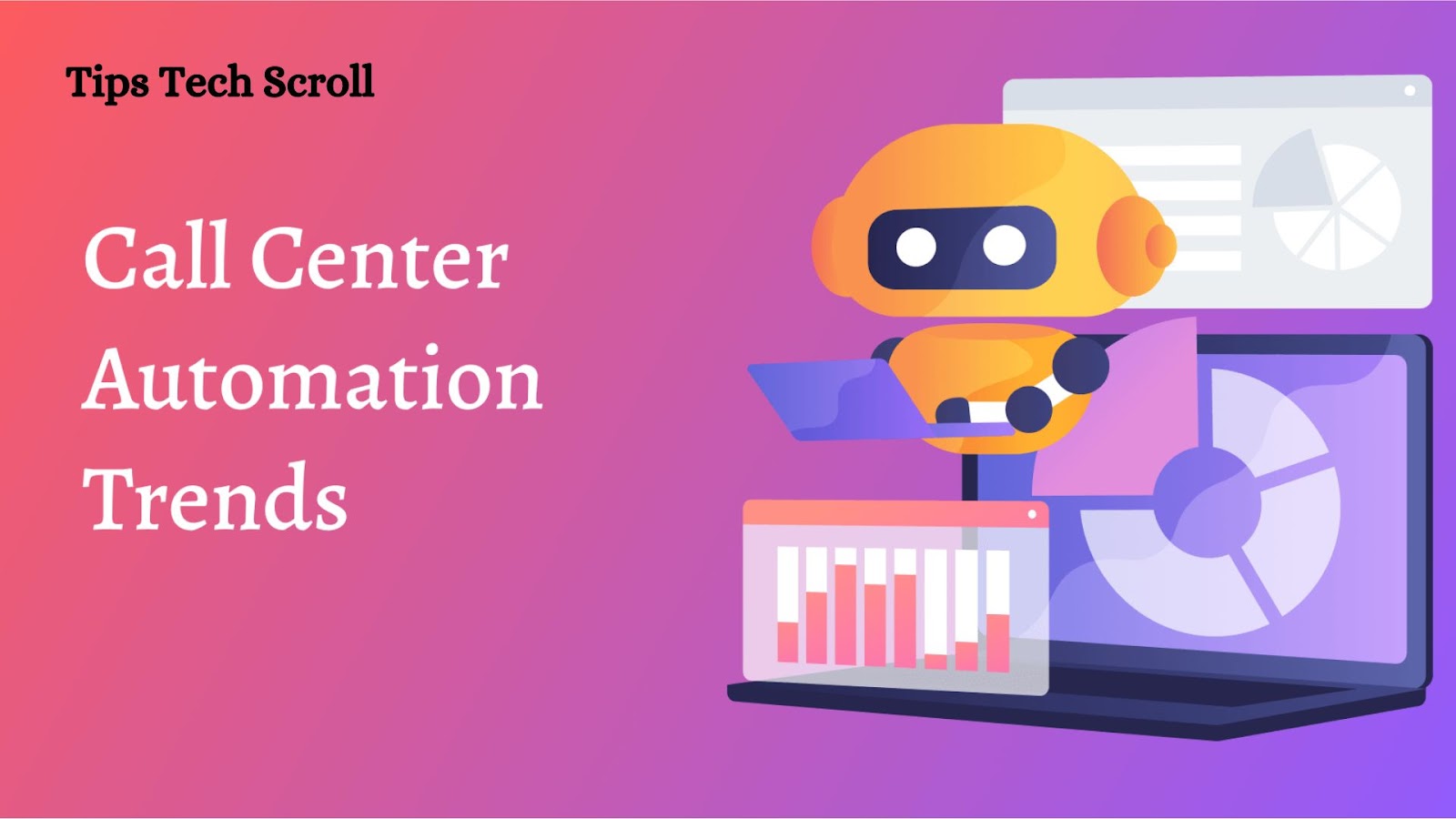Call center automation has become a revolutionary tool. This technology aims to increase productivity and boost client satisfaction in general. Routine tasks are handled by automated systems, freeing up human agents to concentrate on more complicated problems and eventually enhancing productivity.
Automation simplifies communication channels through chatbots and interactive voice response (IVR) technologies. Machine learning algorithms also analyze customer interactions. It yields insightful information for better service.
Though repetitive jobs can be automatic, human interaction is essential for sensitive and thoughtful customer service. The balance between automation and human involvement is crucial to utilize call center automation and must read about GPT Wer.
What is Call Center Automation?
Call center automation describes the application of technology to improve and improve customer service procedures in call centers.
It involves putting software, artificial intelligence (AI), and other tools. It is assistive in handling routine tasks like responding to frequently asked questions or carrying out easy transactions without human interaction.
By enabling human agents to concentrate on more intricate and valuable conversations, the objective is to increase efficiency, lower costs, and improve the overall customer experience.
Historical Perspective of Call Center Automation
Over time, call center automation has changed significantly. In the 1970s, simple interactive voice response (IVR) technology served as its foundation.
More advanced automated systems were introduced in the 1990s. Meanwhile, In the 2000s, artificial intelligence and chatbots became popular.
Recent advancements in machine learning and natural language processing have enhanced call center automation. It has streamlined procedures, increased productivity, and improved customer satisfaction.
What is an IVR System?
The acronym IVR represents “Interactive Voice Response.” With this technology, a computer may communicate with people by speaking and accepting DTMF (dual-tone multi-frequency) tone input through a keypad.
IVR systems, which enable automatic interactions with callers and facilitate routing of calls to the destination without human intervention, are widely employed in telephone systems.
Callers utilizing an IVR system are guided through a menu of options by a previously recorded voice. They can answer by hitting keys on their phone’s keypad or speaking.
IVR systems are for several purposes, such as automated bill payment services, customer assistance hotlines, and survey replies.
Current Applications of Call Center Automation
Chatbots and Virtual Agents:
One of the most visible representations of call center automation is the deployment of chatbots and virtual agents.
These AI-powered organizations interact with clients in real-time, answering questions, giving details, and fixing problems.
The efficiency and round-the-clock availability of chatbots have significantly improved customer service responsiveness.
Speech Recognition Technology:
Advancements in speech recognition technology have enhanced the automation of call centers by allowing systems to understand and respond to spoken language.
This technology streamlines the customer experience. It also contributes to more accurate data analysis for business intelligence.
Predictive Analytics:
Call center automation increases predictive analytics to anticipate customer needs and preferences. By analyzing historical data and patterns, automated systems can personalize interactions.
Benefits of Call Center Automation
Increased Efficiency
Automation can handle routine and repetitive tasks, allowing human agents to focus on more complex issues. It reduces the overall handling time for each call.
Automated systems can quickly process and route calls, leading to faster response times and improved customer satisfaction.
Cost Savings
Automation can prove cost savings by reducing the need for human agents, especially for routine and low-complexity tasks.
24/7 Availability
Automated systems can handle tasks around the clock, reducing the need for extensive human staffing during non-business hours.
Consistent Service Quality
Automation ensures that processes are consistently applied, reducing the risk of human errors and inconsistencies in customer interactions.
Automated systems can provide scripted responses, ensuring that customers receive a consistent level of service regardless of the agent handling the call.
Enhanced Customer Experience
Automation tools can leverage customer data to personalize interactions, providing a more tailored and relevant experience.
Automation enables the development of self-service options, allowing customers to find information or resolve issues independently.
Scalability
Automated systems can efficiently handle a high volume of incoming calls, ensuring that the call center can scale its operations to meet demand.
Data Analysis and Insights
Large volumes of data from client interactions can be gathered and analyzed by automation systems, giving necessary insights into the behavior, preferences, and ordinary problems of clients.
Automated systems can generate reports on key performance indicators, helping call center managers make informed decisions and continuously improve operations.
Employee Satisfaction
Automation allows human agents to focus on more challenging and engaging tasks, improving job satisfaction.
Automating routine tasks reduces monotony for agents, potentially leading to higher morale and productivity.
Compliance and Security
Automation can help enforce compliance with regulations and policies, reducing the risk of human errors in handling sensitive information.
Automated systems can be designed with robust security measures to protect customer data and ensure confidentiality.
Automated Call Scheduling
You can organize calls according to particular preset factors with call scheduling automation. Calls can be planned automatically to fit their schedules. Your agents can focus on more complicated or technical conversations because you have saved their time.
Automation of Customer Interaction
You may automate communications with your consumers in several ways. They can provide basic information to a chatbot, which will forward it to the applicable department. Basic consumer questions can be answered automatically using Interactive Voice Response (IVR) using dynamically generated or pre-recorded speech.
Future of Call Center Automation
Modern technologies will create revolutionary advancements in call center automation in the future. Machine learning and artificial intelligence (AI) will be crucial in providing increasingly complex chatbots and virtual assistants.
They can understand natural language and interact with context. Active problem-solving and customer satisfaction are possible through predictive analytics.
The ability to integrate new technology, such as virtual reality, might completely change support and troubleshooting.
Automation will become far more than simply dealing with customers. It will also include end-to-end procedures supported by robotic process automation (RPA).
As repetitive jobs are automated, human agents can concentrate on complex problem-solving and compassionate interactions.
FAQ
What tasks can I automate in a call center?
Ordinary tasks that can be automatic include call routing, data entry, appointment scheduling, basic customer queries, and repetitive processes such as password resets. Automation is also applicable to analytics, reporting, and workforce management.
How does AI play a role in call center automation?
AI plays a central role in call center automation by enabling machines to carry out operations that typically require human intellect. AI technologies such as natural language processing (NLP) and machine learning (ML) are used for tasks like sentiment analysis, chatbots, and predictive analytics.
What are the drawbacks of call center automation?
Job displacement, depersonalized interactions, and technical glitches pose challenges, impacting customer satisfaction and adaptability in call center automation.
Conclusion
Call center automation is the perfect example of how technology and customer service can work together to improve industries. When it happens, processes simplify, efficiency improves, and resource allocation is built. Automation speeds up repetitive work, but maintaining the human element in client interactions requires careful balancing.
Authenticity continues to be crucial since clients demand sincere relationships and customized experiences. Call centers may better traverse the changing landscape by strategically utilizing automation. It guarantees a smooth blend of innovation and empathy. Call center automation will only succeed if technological advances have balanced with the intangible human components of fantastic customer service.

Greetings! I’m jordan, the proud Owner of Tipstechscroll. With 7 years of experience in SEO, I’m passionate about aiding businesses in their online growth journey. My expertise lies in crafting content that resonates with search engines while ensuring visibility to the intended audience. By staying abreast of the ever-evolving SEO landscape, I alleviate the burden for my clients, ensuring their online presence remains optimized. My goal is to impart my knowledge and empower others to thrive in the digital realm.

